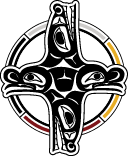 Successful facilitators consider multiple perspectives and viewpoints during a facilitation session contemplating a systems-thinking approach. Systems thinking is the belief that a department, an organization, a community, is more than the sum of its parts; that it is an integrated system that cannot be divided into independent parts.
Successful facilitators consider multiple perspectives and viewpoints during a facilitation session contemplating a systems-thinking approach. Systems thinking is the belief that a department, an organization, a community, is more than the sum of its parts; that it is an integrated system that cannot be divided into independent parts.Moreover, organizations and communities cannot operate effectively if viewed as functioning parts of a larger machine. They must be viewed, organized and managed as social systems if they are to survive, let alone prosper.
Systems thinking is important to effective facilitation and meeting process design because it indicates that a piecemeal, problem-patching approach won’t fix the system or make it work better. When one element is changed, the effect on all elements must be examined and evaluated. For example, implementing improvement strategies in only one part of the organizational system can have a negative effect on attitudes and behaviours in other parts of the system.

 We can use the Systems Thinking Multiple Perspectives analogy of the Mountain Top, Tree Top, Rivers Edge to explore the different perspectives that leadership, management, administrative staff, and citizens can have within an organization or community system. Thinking systemically allows us to:
We can use the Systems Thinking Multiple Perspectives analogy of the Mountain Top, Tree Top, Rivers Edge to explore the different perspectives that leadership, management, administrative staff, and citizens can have within an organization or community system. Thinking systemically allows us to: